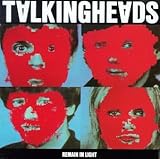[cf. 1922; 4: 23-35; Gabler 1:50-66]
Stephen and Mulligan are discussing their English visitor, Haines, who woke in the middle of the night, apparently screaming about a black panther. Presumably not this kind of black panther.
Why does Mulligan think that kinch, “the knife blade,” is such a good nickname for Stephen? Perhaps because Stephen is prone to cutting people down? Or that he’s sharp-witted? I think it’s also because he’s unstoppably analytical. The word “analysis” means to break (or cut) apart, and Stephen is an admirer of Aristotle, the grandaddy of analysis, the breaking into parts. To be a knife-edge means that you would rather make distinctions than take sides. Mulligan is also saying that Stephen is hard to read, it’s hard for Haines to “make him out.” Haines says he’s not a gentleman, but Mulligan says he has the “real” Oxford manner.
Stephen is clearly not happy with the living arrangements, and feels unsafe. He’s ready to quit. In real life, Oliver St. John Gogarty, the prototype of Mulligan, thought that the Martello Tower could become a kind of bohemian hangout or colony, but Joyce didn’t last a week there.
Haines is generally believed (following Richard Ellmann’s biography of Joyce) , to be modeled after Samuel Chenevix Trench, an Anglo-Irish friend of Gogarty’s who was fascinated with Celtic culture. He also had bad dreams, and in September of 1904, Trench had a nightmare about a black panther while staying in the tower with Joyce and Gogarty. He shot a revolver at the wall (no minor thing, given that this is a small, round, stone room we’re talking about). Gogarty confiscated the gun, but not before shooting off a few rounds himself. Joyce left the tower immediately. Smart move.
Many years ago at a Joyce conference in Rome I heard a scholar give a paper that argued that Haines is also, at least in part, based upon William Bulfin, an Englishman who wrote a book about his bicycle tours in Ireland at the turn of the century. The book, Rambles in Eirinn, was very popular & reprinted many times. In a passage about Dalkey & Sandycove, Bulfin describes a visit to an old military tower where some young men were staying. I’ll steal the excerpted passage from a great RTE website about Ulysses:
On a lovely Sunday morning in the early autumn two of us pulled out along the road to Bray for a day’s cycling in Dublin and Wicklow. We intended riding to Glendalough and back, but we were obliged to modify this programme before we reached Dalkey, owing to a certain pleasant circumstance which may be termed a morning call. As we were leaving the suburbs behind us my comrade, who knows many different types of Irish people, said casually that there were two men living in a tower down somewhere to the left who were creating a sensation in the neighbourhood. They had, he said, assumed a hostile attitude towards the conventions of denationalisation, and were, thereby, outraging the feeling of the seoinini.One of them had lately returned from a canoeing tour of hundreds of miles through the lakes, rivers, and canals of Ireland, another was reading for a Trinity degree, and assiduously wooing the muses, and another was a singer of songs which spring from the deepest currents of life. The returned marine of the canoe was an Oxford student, whose button-hole was adorned with the badge of the Gaelic League-a most strenuous Nationalist he was, with a patriotism, stronger than circumstances, which moved him to pour forth fluent Irish upon every Gael he encountered, in accents blent from the characteristic speech of his alma mater and the rolling blas of Connacht. The poet was a wayward kind of genius, who talked with a captivating manner, with a keen, grim humour, which cut and pierced through a topic in bright, strong flashes worthy of the rapier of Swift. The other poet listened in silence, and when we went on the roof he disposed himself restlessly to drink in the glory of the morning. It was very pleasant up there in the glad sunshine and the sweet breath of the sea. We looked out across to Ben Edair of the heroic legends, now called Howth, and wondered how many of the dwellers in the “Sunnyville Lodges” and “Elmgrove Villas” and other respectable homes along the hillside knew aught of Finn and Oisín and Oscar. We looked northwards to where the lazy smoke lay on the Liffey’s bank, and southwards, over the roofs and gardens and parks to the grey peak of Killiney, and then westwards and inland to the blue mountains.
That was longer than it needed to be, but you get the point. Throughout the book, Bulfin approaches Irish people with the same mystification about how he knows more about the history and the language than they, the natives, do.
The black panther is still a mystery to me. I don’t know if there is a particular symbolic referent here, or if it’s one of the red herrings Joyce throws into this book. It’s certainly odd that Stephen says “black panther” two times in close proximity. Even without a clear allusion, (and I’m looking to you all, helpful readers, to tell me what you know about black panthers), the panther dream suggests that there is something a little unhinged about Haines. Maybe he, with Bulfin as his prototype, is to be seen as approaching his travels in Ireland as a kind of exotic safari (I picture him with his guncase and a pith helmet), and the black panther is the symbol of the exotic otherness of the Irish. You tell me.
<< previous | next >>
View this Page of the Comic
Reader’s Guide for I: Telemachus
Dramatis Personae for I: Telemachus












